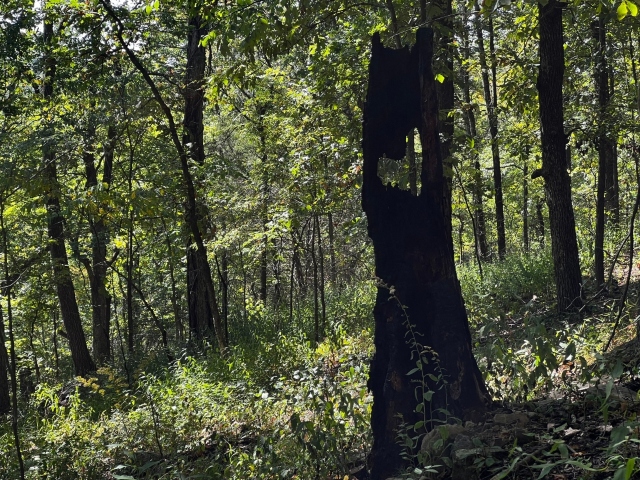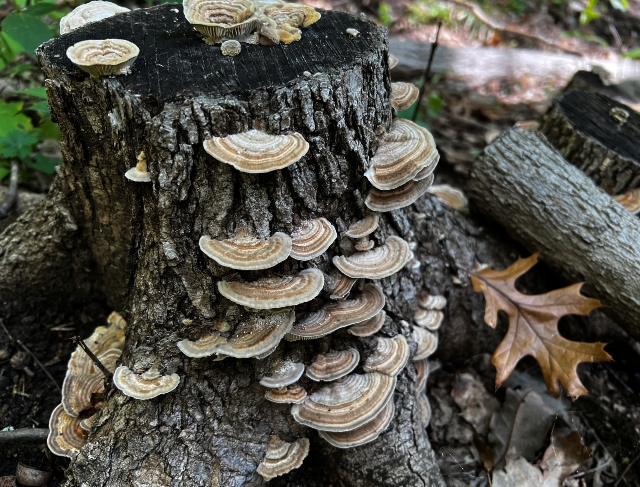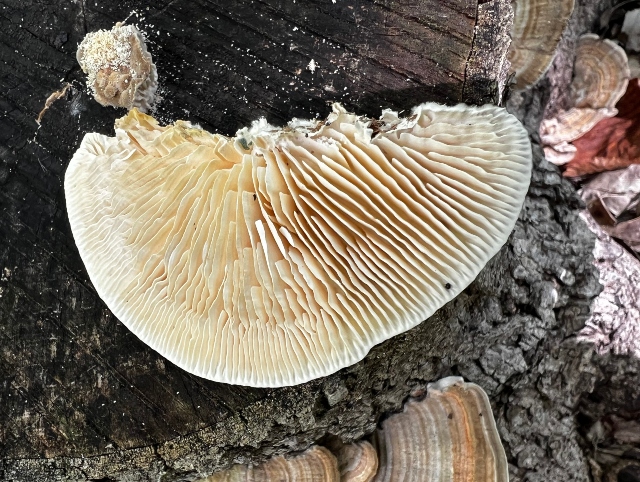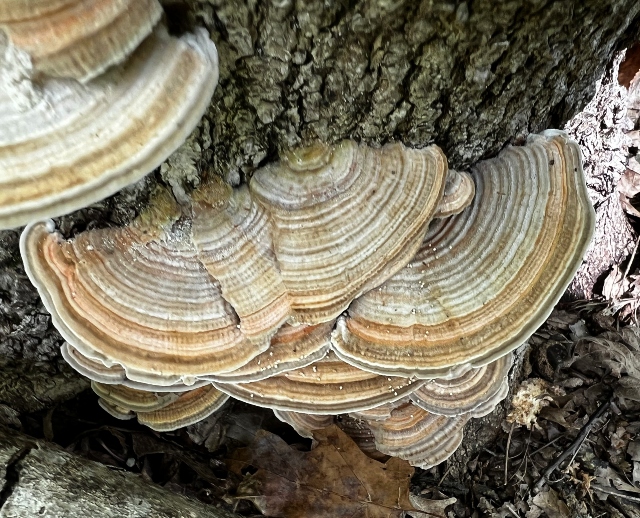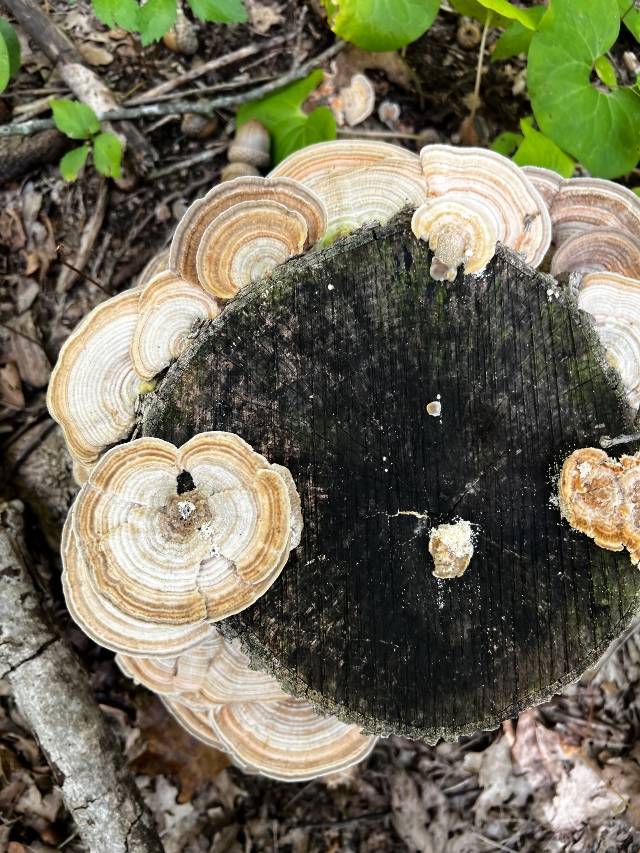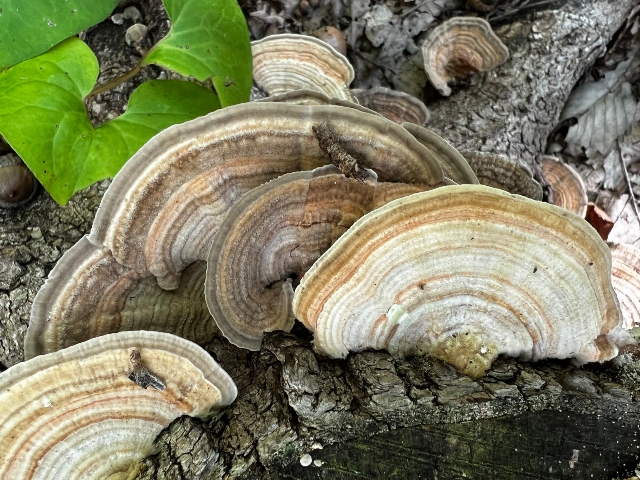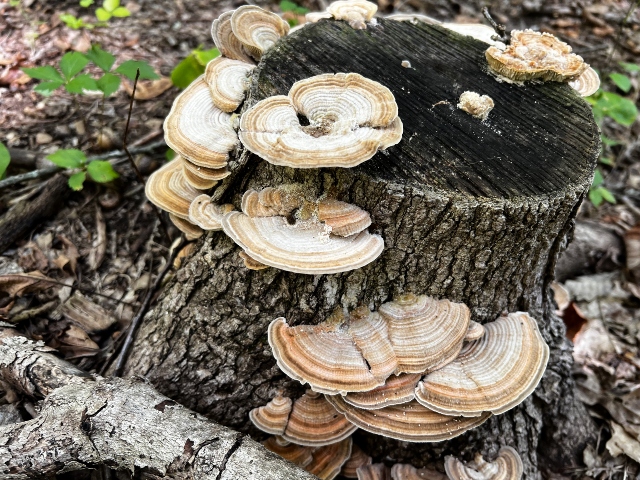While looking for reptiles and amphibians in the woods in southern Illinois, I noticed this bracket fungus on a tree stump.
Multicolor Gill Polypore is widespread across Europe, Asia, and North and South America. In the United States it is very common from the East Coast to the Great Lakes states, south to Texas, and on the West Coast.
From the top, it looks very much like Turkeytail Mushroom, but by viewing the underside of the cap, there are gills instead of pores.
The “gills” of the multicolor gill polypore are actually radially arranged tubes that are forked and fused, which can make them look like gills. These tubes are tough and leathery, as opposed to true gills, which are more fragile.
This species exists as a network of fungal cells (mycelium) within rotting wood. The mycelium obtains nourishment by digesting the wood. When ready to reproduce, it develops the brackets outside of the wood, which are reproductive structures.
Multicolor Gill Polypore plays an important role in the ecosystem, breaking down dead wood and returning nutrients to the soil. This species also helps to recycle carbon and nitrogen, aiding in the growth of new plants and trees.
Mushrooms decorate nature the way wildflowers do, adding to our pleasure on hikes. Many mushrooms are most prominent in the fall, when wildflowers are winding down.

